| Image | Plant | Status | Notes | Events |
|---|---|---|---|---|
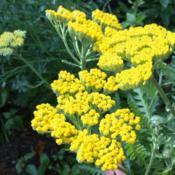 |
Fern-Leaf Yarrow (Achillea filipendulina 'Coronation Gold') |
Prev Medicinal Herb Perennial Garden |
Spring 21 | April 6, 2021: Obtained plant May 17, 2021: Bloomed |
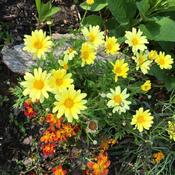 |
Marguerite Daisy (Argyranthemum 'Butterfly') |
Have Perennial Garden |
||
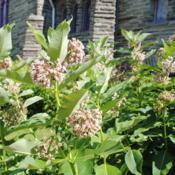 |
Common Milkweed (Asclepias syriaca) |
Have Perennial Garden |
https://www.eealliance.org/mon... https://www.fs.fed.us/wildflow... Plant Description: Single, un-branched stalk that is 50-200 cm tall. Leaves opposite on stalk, 10-25 cm long and 3-10 cm wide. Flowers white to pink. 2 to 6 umbels from the upper nodes. Each umbel is 5-10 cm broad. Seed pods are 8-12 cm long and 2.5-3.5 cm broad. Bloom Period: June through August Seeds: July through September Habitat: Meadows, fields and roadsides Range: Present but rare in northwest region of state |
March 13, 2021: Seeds sown May 5, 2021: Transplanted April 10, 2022: Seeds sown June 19, 2022: Potted up |
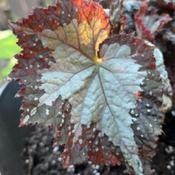 |
Rex Begonia (Begonia rex) |
Have Perennial Garden |
August 6, 2023: Transplanted | |
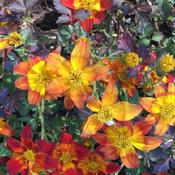 |
Arizona Beggarticks (Bidens aurea 'Bee Alive') |
Prev Perennial Garden |
||
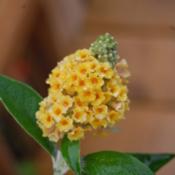 |
Butterfly Bush (Buddleja 'Golden Glow') |
Have Perennial Garden |
April 24, 2022: Transplanted June 19, 2022: Maintenance performed (Cut Back) |
|
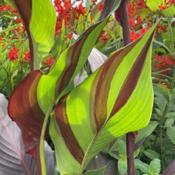 |
Canna Lily (Canna 'Yellow King Humbert') |
Have Perennial Garden |
should be lifted and stored during winter at 45-50 degrees F. in Zone 7 | April 1, 2021: Obtained plant March 28, 2022: Plant emerged |
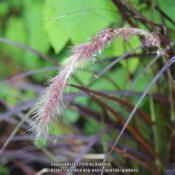 |
Red Fountain Grass (Cenchrus setaceus 'Cupreum') |
Prev Perennial Garden |
May 1, 2021: Obtained plant | |
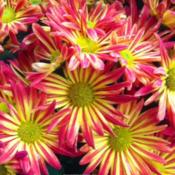 |
Chrysanthemum |
Have Perennial Garden |
Chrysanthemum "Old Yellow, Oakland Cemetery" - blooms november https://extension.illinois.edu... |
March 31, 2022: Transplanted December 20, 2022: Miscellaneous Event (Divided) |
| Chrysanthemum 'Fireworks Igloo' |
Have Perennial Garden |
Bloom: Late Summer to Fall | October 21, 2021: Obtained plant April 7, 2022: Transplanted July 30, 2022: Transplanted |
|
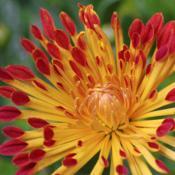 |
Mum (Chrysanthemum 'Matchsticks') |
Prev Perennial Garden |
||
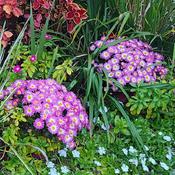 |
Garden Mum (Chrysanthemum Stacy™ Pink) |
Have Perennial Garden |
May 17, 2021: Bloomed | |
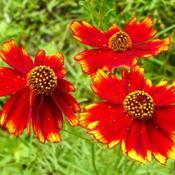 |
Tickseeds (Coreopsis) |
Prev Perennial Garden |
||
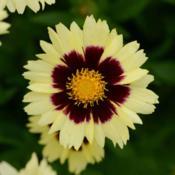 |
Tickseed (Coreopsis UpTick™ Cream & Red) |
Prev Perennial Garden |
||
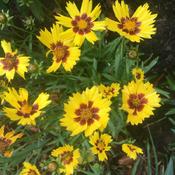 |
Tickseed (Coreopsis grandiflora 'Sunkiss') |
Have Perennial Garden |
April 4, 2021: Obtained plant May 17, 2021: Bloomed |
|
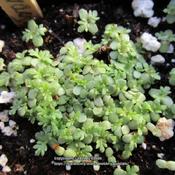 |
Golden Marguerite (Cota tinctoria 'Kelwayi') |
Have Perennial Garden |
This variety of Anthemis Tinctoria will grow about 30 inches tall and is invaluable for the summer garden. When blooms are spent, deadheading at least once will provide a longer bloom season. The Dyer's Chamomile plant prefers well-drained soil and is fairly drought tolerant, but it does not like high humidity zones. Cota tinctoria, the golden marguerite, yellow chamomile, or oxeye chamomile, is a species of perennial flowering plant in the sunflower family. Other common names include dyer's chamomile, Boston daisy, and Paris daisy. In horticulture this plant is still widely referred to by its synonym Anthemis tinctoria.[2] It is a short-lived plant often treated as biennial, native to Europe, the Mediterranean and Western Asia and naturalized in scattered locations in North America.[3][4] It has aromatic, bright green, feathery foliage. The serrate leaves are bi-pinnatifid (= finely divided) and downy beneath. It grows to a height of 60 cm (24 in).[5] It has yellow daisy-like terminal flower heads on long thin angular stems, blooming in profusion during the summer.[5] It has no culinary or commercial uses and only limited medicinal uses. However, it produces excellent yellow, buff and golden-orange dyes, used in the past for fabrics.[6] Cota tinctoria is grown in gardens for its bright attractive flowers and fine lacy foliage; there is a white-flowering form. Under the synonym Anthemis tinctoria, the cultivar 'E.C. Buxton' has gained the Royal Horticultural Society's Award of Garden Merit.[7] The popular seed-raised cultivar 'Kelwayi' has 5 cm wide, yellow flowers on 65 cm plants.[8] Make Dye. https://www.youtube.com/watch?... |
March 24, 2022: Seeds sown |
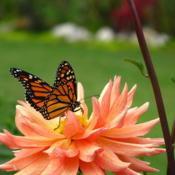 |
Dahlias (Dahlia) |
Have Perennial Garden |
Germination: 3-7 days While dahlia plants are still young, pinch out the growing tip of each stem to encourage bushier growth and masses of flowers. Deadhead faded dahlia flowers. Culinary note: All dahlia flowers and tubers are edible. The flavours and textures can vary greatly depending on the soil and conditions in which they were grown. Flavours range from water chestnut through to a spicy apple or even carrot. - https://www.thompson-morgan.co... In 1872 J. T. van der Berg of Utrecht in the Netherlands received a shipment of seeds and plants from a friend in Mexico. The entire shipment was badly rotted and appeared to be ruined, but van der Berg examined it carefully and found a small piece of root that seemed alive. He planted and carefully tended it; it grew into a plant that he identified as a dahlia. He made cuttings from the plant during the winter of 1872–1873. This was an entirely different type of flower, with rich, red color and a high degree of doubling. In 1874 van der Berg catalogued it for sale, calling it Dahlia juarezii to honor Mexican President Benito Pablo Juarez, who had died the year before, and described it as "...equal to the beautiful color of the red poppy. Its form is very outstanding and different in every respect of all known dahlia flowers." This plant has perhaps had a greater influence on the popularity of the modern dahlia than any other. Called "Les Etoiles du Diable" (Stars of the Devil)[90] in France and "Cactus dahlia" elsewhere, the edges of its petals rolled backwards, rather than forward, and this new form revolutionized the dahlia world. It was thought to be a distinct mutation since no other plant that resembled it could be found in the wild.[91] Today it is assumed that D. juarezii had, at one time, existed in Mexico and subsequently disappeared. Nurserymen in Europe crossbred this plant with dahlias discovered earlier; the results became the progenitors of all modern dahlia hybrids today. Early history Spaniards reported finding the plants growing in Mexico in 1525, but the earliest known description is by Francisco Hernández, physician to Philip II, who was ordered to visit Mexico in 1570 to study the "natural products of that country". They were used as a source of food by the indigenous peoples, and were both gathered in the wild and cultivated. The Aztecs used them to treat epilepsy, and employed the long hollow stem of the Dahlia imperialis for water pipes. The indigenous peoples variously identified the plants as "Chichipatl" (Toltecs) and "Acocotle" or "Cocoxochitl" (Aztecs). From Hernandez's perception of Aztec, to Spanish, through various other translations, the word is "water cane", "water pipe", "water pipe flower", "hollow stem flower" and "cane flower". All these refer to the hollowness of the plants' stem. Dahlia is found predominantly in Mexico, but some species are found ranging as far south as northern South America.[33] D. australis occurs at least as far south as southwestern Guatemala, while D. coccinea and D. imperialis also occur in parts of Central America and northern South America. Dahlia is a genus of the uplands and mountains, being found at elevations between 1,500 and 3,700 meters, in what has been described as a "pine-oak woodland" vegetative zone. Most species have limited ranges scattered throughout many mountain ranges in Mexico. Dahlias grow naturally in climates that do not experience frost (the tubers are hardy to USDA Zone 8), consequently they are not adapted to withstand sub-zero temperatures. However, their tuberous nature enables them to survive periods of dormancy, and this characteristic means that gardeners in temperate climates with frosts can grow dahlias successfully, provided the tubers are lifted from the ground and stored in cool yet frost-free conditions during the winter. Planting the tubers quite deep (10 – 15 cm) also provides some protection. When in active growth, modern dahlia hybrids perform most successfully in well-watered yet free-draining soils, in situations receiving plenty of sunlight. Taller cultivars usually require some form of staking as they grow, and all garden dahlias need deadheading regularly, once flowering commences. In 1787, the French botanist Nicolas-Joseph Thiéry de Menonville, sent to Mexico to steal the cochineal insect valued for its scarlet dye, reported the strangely beautiful flowers he had seen growing in a garden in Oaxaca. In 1789, Vicente Cervantes, Director of the Botanical Garden at Mexico City, sent "plant parts" to Abbe Antonio José Cavanilles, Director of the Royal Gardens of Madrid. Cavanilles flowered one plant that same year, then the second one a year later. In 1791 he called the new growths "Dahlia" for Anders (Andreas) Dahl. The first plant was called Dahlia pinnata after its pinnate foliage; the second, Dahlia rosea for its rose-purple color. In 1796 Cavanilles flowered a third plant from the parts sent by Cervantes, which he named Dahlia coccinea for its scarlet color. From Spain, Dahlia propagation spread across Europe. The earliest reference of Dahlia in the United States can be found in a catalogue from the Linnaean Botanical Garden, New York, 1820, that includes one scarlet, one purple, and two double orange Dahlias for sale. |
October 15, 2021: Cuttings stuck March 6, 2022: Potted up March 24, 2022: Seeds sown (Pompon Mix) April 7, 2022: Plant emerged June 18, 2022: Transplanted April 15, 2023: Transplanted July 30, 2023: Cuttings stuck August 27, 2023: Cuttings stuck April 6, 2024 - November 1, 2024: Transplanted (Star Mix) |
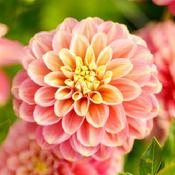 |
Dahlia 'Milena Fleur' |
Have Perennial Garden |
https://www.dutchbulbs.com/pro... |
March 6, 2022: Obtained plant April 7, 2022: Plant emerged June 8, 2022: Bloomed |
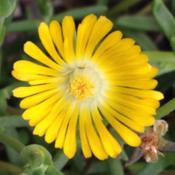 |
Ice Plant (Delosperma Wheels of Wonder® Golden Wonder) |
Prev Perennial Garden |
||
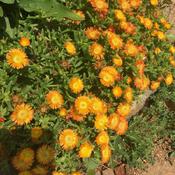 |
Ice Plant (Delosperma Wheels of Wonder® Orange Wonder) |
Prev Perennial Garden |